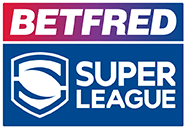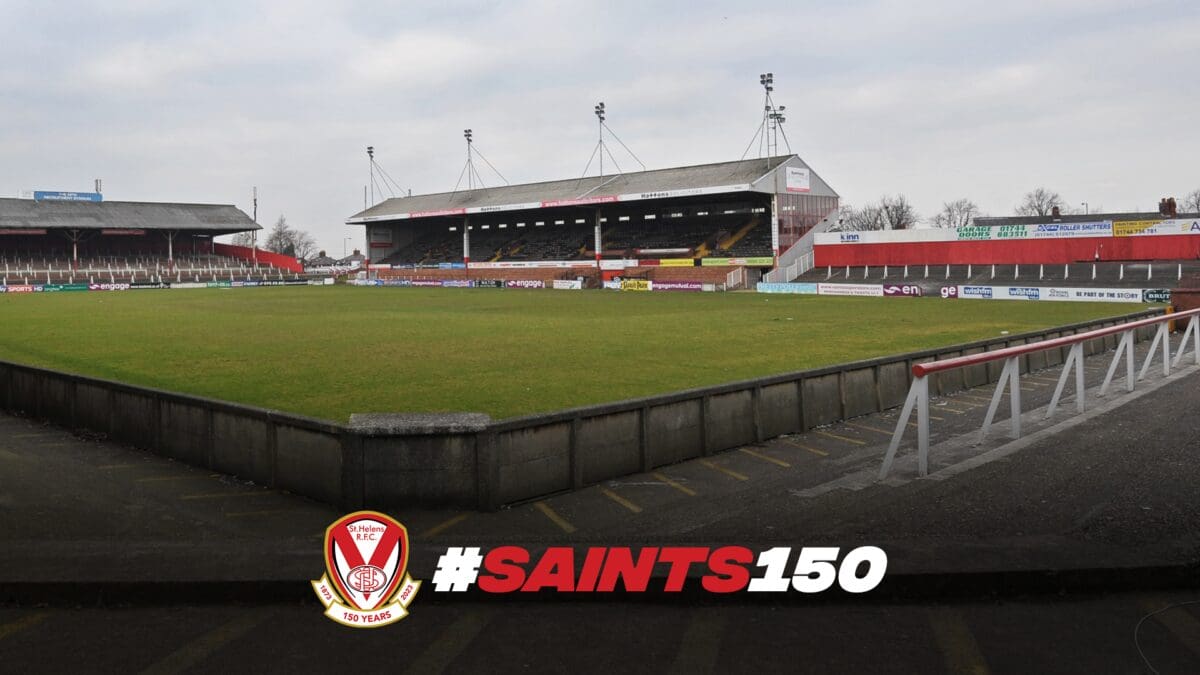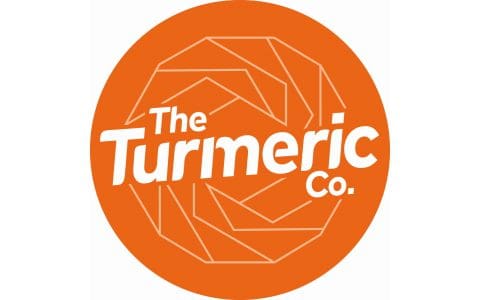On the 19th of November, St.Helens R.F.C. will celebrate the anniversary date of our Club’s founding, and as we move towards that special occasion, we are exploring our famous history.
Today is Day 10 of our 15 days of the Club’s build-up to the #Saints150 date, and we are highlighting what was our home from 1890 through to 2010 – Knowsley Road.
Following the founding of St.Helens R.F.C. by William Douglas Herman in 1873, the Club had a nomadic-like lifestyle and played fixtures in various places around the town starting at Boundary Road before moving to play at local grounds such as Queen’s Park, Dentons Green, and Windle (find out more about our Club’s founding here).
The Saints needed to find a new home and they settled on a piece of land in Eccleston between Dunriding Lane and Knowsley Road in 1890. The first match played at this new venue was on September 6th against Manchester Rangers, with the Saints winning.
Whilst being further away from the centre of the town the new Saints playing ground was looked on favourably despite not having luxuries such as changing rooms, but this was the norm for rugby teams of the time with players getting changed at pubs.
The 1890s were times of promise with the new ground and a new grandstand erected in the 1894 off-season, just before the big split of the sport by 21 clubs in Lancashire and Yorkshire, including St Helens, from the Rugby Football Union.
Not to simplify the issues that led to the split too much, but the central causes dealt with the argument of professionalism against amateurism; the RFU’s stance that players should not be compensated for time taken off work to play for clubs, or who had become injured whilst playing. The Northern Union, now known as the Rugby Football League, was created and the route to becoming a full professional sport began.
Knowsley Road hosted St.Helens’ first match as part of the Northern Union on September 7th, 1895, against Rochdale Hornets, winning 8-3. Work continued around the ground, with the formation of three banks around the ground to go with the grandstand in 1896.
Into the new century, the Saints were not exactly achieving success in the league but were becoming well-known and recognised for their identity of playing stylish and entertaining rugby. By 1913 there were around 1,000 season ticket holders with plans to finally have changing rooms and offices built as part of a new stand, with work struggling into 1914 – but far more important matters were at hand as the country was at war with Germany.
The much-needed ground developments were put on hold, and matches initially were urged to persist by the Northern Union, however, following the Challenge Cup Final in 1915, fixtures were to be suspended for the duration of the war.
Following the First World War, a new Pavilion was built and opened by Lord Derby for Christmas 1920, and changing room facilities were finally accessible at Knowsley Road for the very first time. By the mid-1920s Saints had star players such as Alf Ellaby and Leslie Fairclough performing brightly on the Knowsley Road pitch. The 1926 Championship Final saw more improvements brought to the ground, with extended seating, banking, and press box.
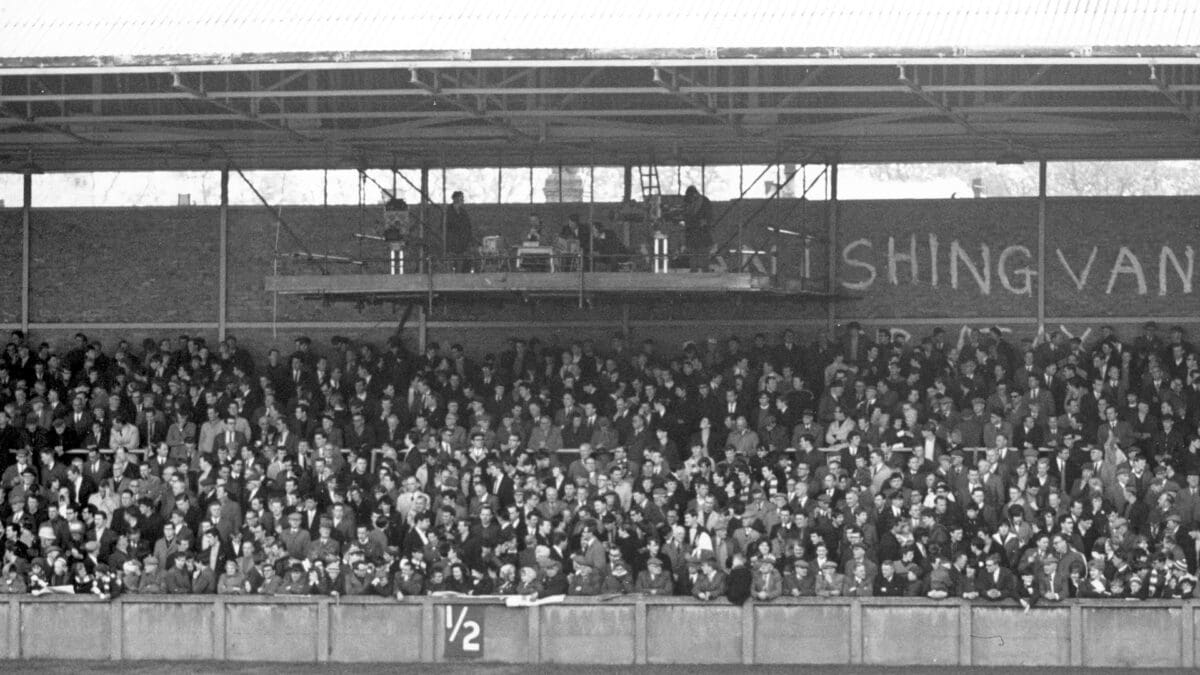
The Saints’ first Championship came in 1932 with what many consider to be the first truly great team the Club had, but rugby clubs were struggling following the Great Depression, but our Saints fought to survive as the Second World War beckoned in 1939.
Knowsley Road was temporarily turned into a wartime provision and was approved to be a station for several first aid parties, with the use of areas such as the pitch itself, the changing rooms, and the Pavilion if needed.
Following the Second World War in 1945, Knowsley Road was looking battered but with the public engaging back in with its local rugby side in 1947 wooden fencing around the ground was replaced with pre-cast concrete walls, with the Popular Stand getting roof repairs too. By 1951 there was improved terracing and the construction of the Edington Stand.
It was a new era to begin from the 1952-53 season under Chairman Harry Cook, who was vital to the survival of the Club during the war, and with Jim Sullivan as coach the Saints won their second League Championship in 53’ and then finally won the Challenge Cup for the first time in 56’ at Wembley stadium. Stars were playing for Saints too with Alex Murphy, Tom van Vollenhoven, and Dick Huddart and a new Main Stand in 1958 was built over the off-season.
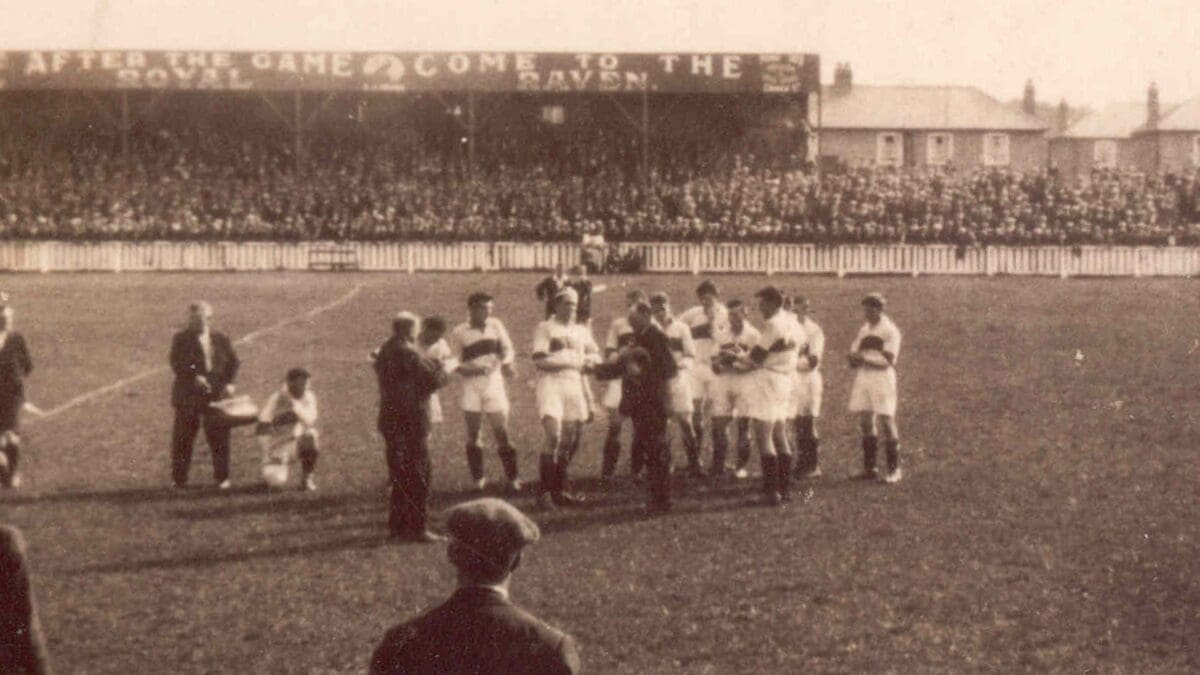
Into the 1960s and 70s and our beloved Knowsley Road had a new Popular Side enclosure, a new coach with Alan Prescott, and a new look that debuted win a win at Wembley in the 61’ Challenge Cup Final – the famous Red V (which you can read more about here).
There had been good times at the Club in the years gone by, but this period of success set up the expectations of silverware at the Saints; three more Cups followed joining in this era; seven Lancashire Cup wins, two League Leaders’ Shields and four League Championships. Golden days indeed.
A shift in dynamic came in the 60s too with the installation of big floodlights in 1965, opening the opportunity to play matches on Friday nights as Saturday afternoons were attracting the public to football matches. The Club embraced this opportunity in conjunction with the new bar and restaurant facilities at the Pavilion End in the 1970s.
The 1980s and 1990s had a tough act to follow, our Knowsley Road crowd had become accustomed to winning trophies and so when Mal Meninga and Phil Veivers came to Saints in 1984, their boost was huge. Our team saw off Wigan to win the Lancashire Cup in 84’ and then beat Hull KR for the Premiership too in 85’. Both were much-needed shots in the arm, as was the advent of Super League in 1996.

Moving to the summer and making the game more modern, Knowsley Road was looking increasingly dated as the years rolled on, but the players’ facilities were revamped, Sky’s big screen was introduced into the ground, and a new entrance onto the field. The new era could not have started better either, with Saints winning the first Super League title, the Club’s first league championship in 20 years. Plans for a full redevelopment of Knowsley Road were initially discussed, but the plan of funding a new stadium by selling the Saints’ old home became the only plan to look realistic.
The team thrived on the field with further Super League titles in 1999, 2000, 2002, and 2006, Challenge Cups in 1996, 1997, 2001, 2004, and a three-peat from 06 to 08. The Saints became the World Club Champions for the first time in their history in 2001 and followed it up in 2007. Whilst the 60s and 70s were undoubtedly golden days, this summer period was the most successful of the Knowsley Road years – the highlight being a historic treble in 2006.
Our Club’s future was confirmed in 2008 with a new ground to be built ready for the 2011 season, this was delayed however to 2012, and the final St.Helens campaign to be played at Knowsley Road would be 2010.
The final three matches played at our home of 120 years were something taken out of a Hollywood film as club captain and one of the Red V’s greatest-ever servants, Keiron Cunningham, came up with pivotal plays to keep the season alive. It was only fitting that he would go on to score the final try scored at Knowsley Road in what would be his final season as a player too.
Those who were there on the final night know how special the occasion felt, one tinged with sadness for sure but one of celebration as well as the crowd enjoyed their final evening at the Saints’ old home and sang ‘Oh When The Saints Go Marching In’…


